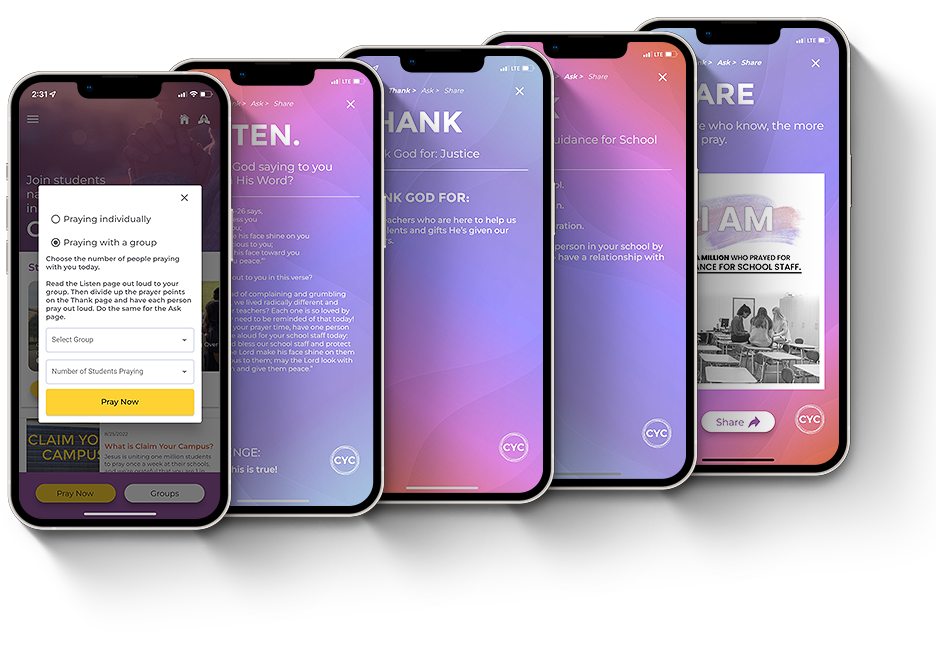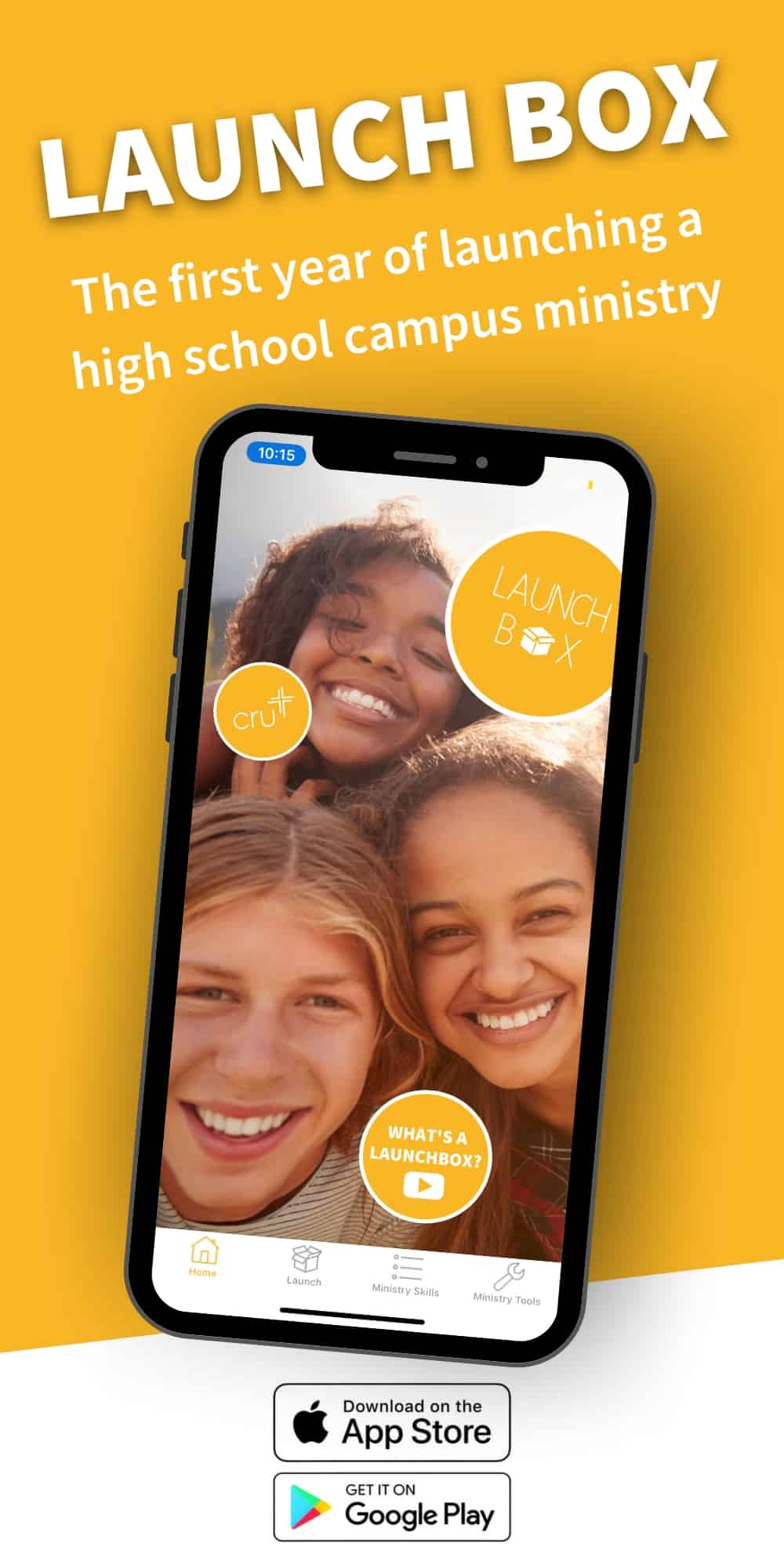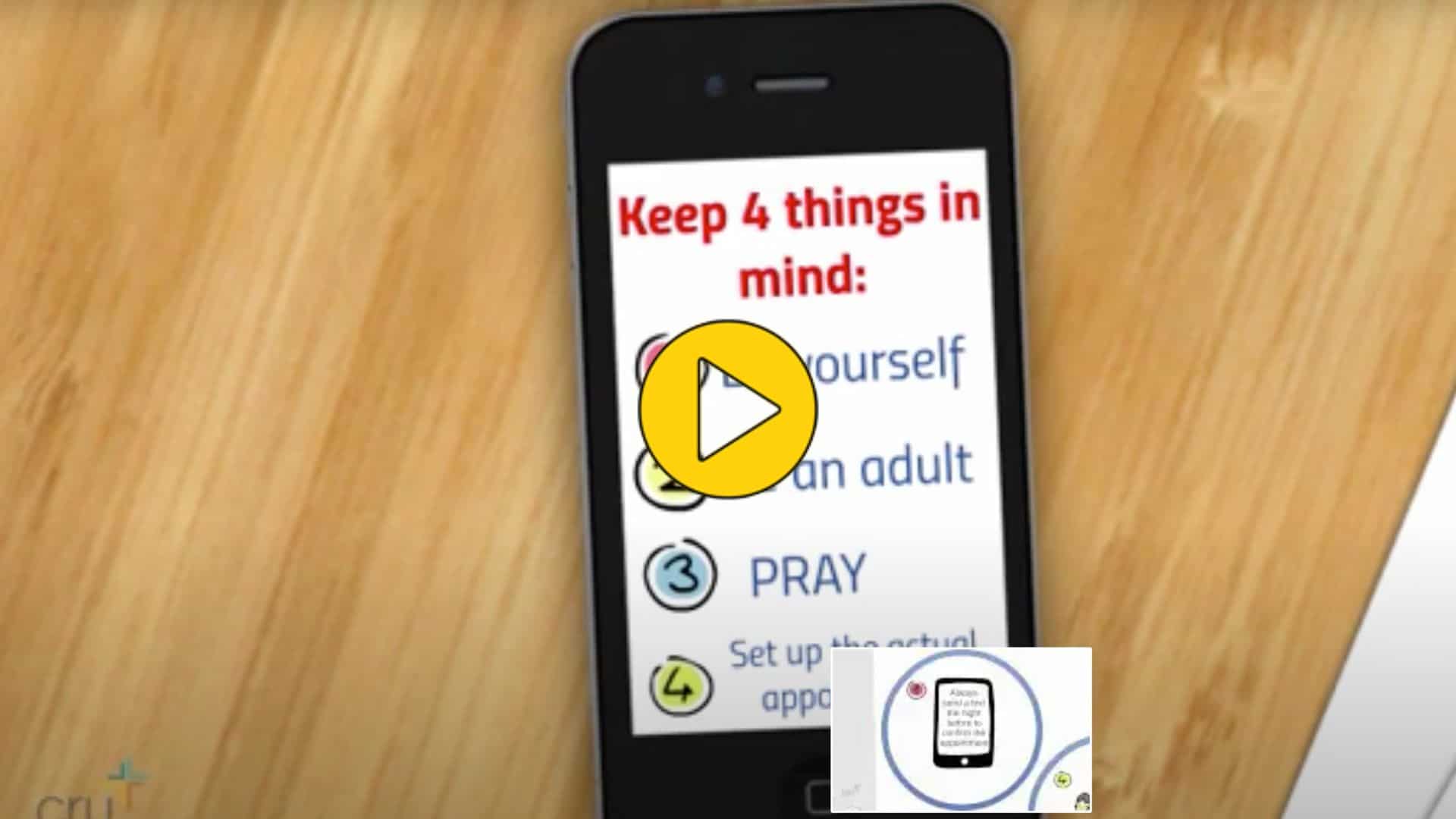There are many ways to share the good news of Jesus. He offers us new, vibrant, eternal life freely by grace. Throughout the Bible, we see Jesus and His followers use different methods to share the same message, depending on the audience to which they were sharing.
If you know high school students, you know they love stories. Your faith story can be the bridge people need to move from spiritual confusion to clarity. Your story is not a trophy to show off to other Christians, but a bridge to bring hard-to-understand spiritual concepts down to earth. Here are three steps to use your story to point to the greatest story of all time.
You are already in relationships with students who need to hear the good news, and you know they would be able to relate to your story. But how do you pivot from bantering about last weekend’s game to the purpose of your relationship with them? The answer is a solid transition. Here is an example:
“As many of you know, I work with Cru, a youth ministry that helps students understand a relationship with God. Before I joined Cru, I had an encounter with God that changed my life. I would love to share some of that story with you. Would you like to hear it?”
Use words that are natural to you to find a way to move the conversation to deeper things. Since the students know that you are with Cru, and you may have already had spiritual conversations with them, use that credibility to offer them a chance to hear how God has personally worked in your life.
Consider thinking through some transitions you could use in your everyday life and commit them to memory. You never know when an opportunity will present itself.
And if someone asks about your hope as a believer, always be ready to explain it. 1 Peter 3:15
Your faith story can be the bridge people need to move from spiritual confusion to clarity.
Once your students’ ears are perked up and ready to hear your story, it is time to nail your 3-Minute Testimony. We know it is very hard to share your life story in three minutes; that is why you prepare your testimony beforehand and focus on one specific moment in your life, not the whole story. The goal is to use this specific story as a vehicle in order to give students a framework for how the gospel could impact someone personally. There will be more time to share the rest later.
You want to hit four points of the gospel within your story- creation, fall, reconciliation, and response. What was life like before Jesus, how you received/met Jesus, and what changes happened after you knew Jesus? For example, you could say the following:
“When I was in high school, I heard about God’s great love for me (point 1), but I did not know God personally until I was forced to really trust Him (point 4) when I was 20 years old. Before I met Jesus, I strove to make a name for myself and was wracked with insecurity if I ever made a mistake. When I dropped a pass in football or got rejected by a girl, it felt like the end of the world. I had no idea how important it was that Jesus died for my failures and sins until one of those failures nearly took my life (point 2). When He saved me physically, I realized that I could trust Him spiritually (point 3). Since meeting Him, I have no fear of failure, since my hope is not in my own abilities–it is in Jesus’ great love for me (point 4).”
Make sure to include personal highlights and details. It is better to be specific and narrow in scope than to make broad generalizations about your whole life with no depth or detail.
If you are thinking “my testimony is boring! I have no dramatic coming-to-Jesus moment in my story,” read the “What if I Don’t Have a Story” section of this article. Every follower of Jesus has a time in their life that God has shown up. Point to how your life was changed through this encounter with the living God. Your story is worth sharing because Jesus is the center of it!
After you have shared your story, lead the students to a clear next step. Answer whatever questions they have, then it is time for another great transition:
“Guys, I would like to wrap up our time by giving you an opportunity to begin a relationship with God. Pull out your phone, and download the app called GodTools, and I will show you how to begin a relationship with Jesus!”
If you would rather use a different tool, that is completely fine! The key is to invite the students to the point of decision.
Your story may have given them a desire to invite Jesus into their lives to be their Lord and Savior! But if that is not the case, you can invite them to an event or ask them to meet again to read a story from the Bible of a changed life, such as Saul’s journey to becoming Paul.
Motivation for the Journey
High school students love stories and your story can be the bridge to bring students to the foot of the cross.
2 Corinthians 2:15-17 says “For we are the aroma of Christ to God among those who are being saved and among those who are perishing, to one a fragrance from death to death, to the other a fragrance from life to life. Who is sufficient for these things? For we are not, like so many, peddlers of God’s word, but as men of sincerity, as commissioned by God, in the sight of God we speak in Christ.”
Your life lived in the sight of your students and of God can be what students need to meet Jesus. Take a leap of faith, and set up a time to share your story with students who need to hear it!
Next Step
Prepare your testimony and share it with 2 people. You can find detailed instructions to do this in How Judy Shares Her Faith.
Learn More








